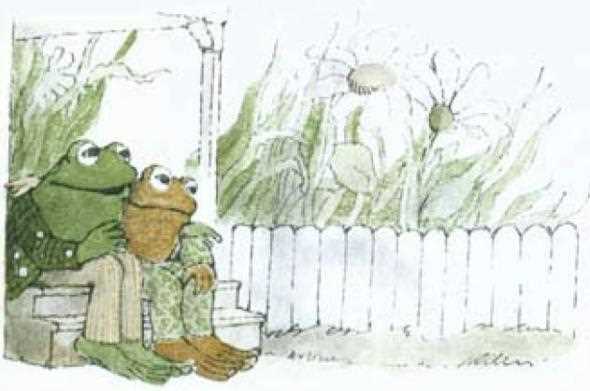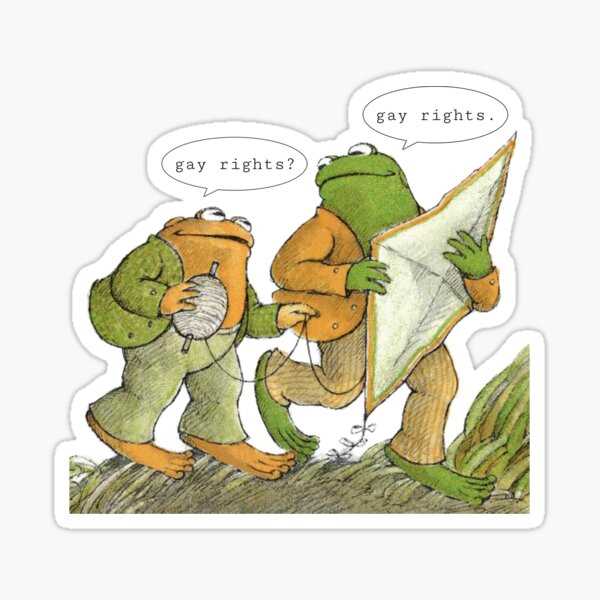In recent years, there has been much speculation and curiosity surrounding the topic of homosexuality in the animal kingdom. While many studies have focused on mammals and birds, little attention has been given to amphibians. Specifically, the alleged homosexuality of frogs and toads has become a subject of interest and debate among scientists and nature enthusiasts alike.
As it turns out, the world of frogs and toads is filled with fascinating behaviors and reproductive strategies. These remarkable creatures exhibit a wide range of mating behaviors, including complex courtship rituals and unique reproductive adaptations. While heterosexual mating is the norm, there have been several documented cases of same-sex pairing among frogs and toads, leading researchers to explore the potential reasons behind this phenomenon.
One hypothesis suggests that same-sex pairing in frogs and toads may serve a social function rather than a reproductive one. It has been observed that male frogs and toads often engage in territorial disputes and competition for mates. By forming same-sex alliances, individuals are more likely to succeed in defending their territories and attracting potential mates. This suggests that same-sex pairing may be a strategic behavior aimed at increasing the chances of reproductive success.
The Diversity of Gay Frogs and Toads
Frogs and toads are unique creatures that have evolved different reproductive strategies. Some species lay their eggs in water, while others lay eggs on land. They also display a range of courtship rituals, such as vocalizations, mating dances, and physical displays.
Scientific studies have documented instances of homosexuality in various species of frogs and toads. For example, the male midwife toad (Alytes obstetricans) has been observed engaging in same-sex courtship and mounting behaviors. Similarly, the African clawed frog (Xenopus laevis) has displayed various forms of same-sex sexual behavior.
The existence of homosexuality in frogs and toads has generated controversy and debate among researchers and the general public alike. Some argue that these behaviors may have evolutionary significance, serving as a way to maintain social bonds or reduce competition within populations. Others view it as a simple misfire of reproductive instincts.
Brief Overview of Homosexuality in Nature

Homosexuality, the romantic or sexual attraction between individuals of the same sex, is a phenomenon that has been observed in various species throughout the animal kingdom. While it is often associated with mammals, such as humans and primates, it is also found in other groups, including amphibians like frogs and toads.
Research has shown that same-sex behaviors and pairings occur naturally in numerous frog and toad species. These observations challenge the traditional notion that homosexuality is an exclusively human trait and highlight the diversity of sexual orientations in the animal world.
- Same-sex courtship and mating rituals have been documented in several frog and toad species, where males engage in complex vocalizations and physical displays to attract same-sex partners.
- Homosexual behaviors can also involve prolonged physical contact, such as mounting or clasping, between individuals of the same sex.
- Studies have indicated that same-sex pairings can serve various functions, including social bonding, establishing dominance hierarchies, and increasing reproductive success.
The existence of homosexuality in frogs and toads raises intriguing questions about its evolutionary significance. Researchers have proposed various theories, including the potential role of homosexuality in promoting genetic diversity and social cohesion within populations.
Frogs and toads are fascinating creatures that exhibit a wide range of behaviors. In order to fully explore the alleged homosexuality of frogs and toads, it is essential to first understand their typical behavioral patterns.
The Diversity of Frog and Toad Behavior
Frogs and toads are highly diverse in their behaviors, with different species exhibiting different mating rituals, territorial displays, and communication methods. Some species display complex courtship behaviors, while others rely on simple vocalizations to attract mates. By studying these behaviors, scientists are able to gain insight into the natural behaviors of these amphibians.
Toad Behavior and Homosexuality
One possible explanation for homosexual behavior in frogs and toads is that it may serve a social function. Just like in other species, same-sex interactions could play a role in establishing and reinforcing social bonds within a group. Additionally, same-sex behavior could also be a result of reproductive competition, as individuals may engage in same-sex interactions as a way to assess the quality of potential mates.
The Importance of Studying Homosexuality in Frogs and Toads
| Key Points: |
|---|
| – Frogs and toads exhibit a wide range of behaviors |
| – Same-sex behavior has been observed in some frogs and toads |
| – Homosexual behavior in frogs and toads may serve social functions |
| – Environmental and social factors can influence same-sex behavior |
| – Studying homosexuality in frogs and toads provides valuable insight into sexual orientation and evolutionary significance |
The Role of Reproduction in Biology

In the world of amphibians, reproduction plays a vital role in the survival and perpetuation of species. Frogs and toads are no exception to this rule. These fascinating creatures have evolved complex mating behaviors and reproductive strategies to ensure the continuation of their genetic lineage.
One of the primary functions of reproduction in biology is the creation of offspring. For frogs and toads, this typically involves external fertilization, where the female lays eggs and the male fertilizes them with his sperm. This process usually takes place in bodies of water, such as ponds, lakes, or streams, which provide a suitable environment for the development of tadpoles.
However, reproduction is not solely about the act of creating progeny. It also serves several other important purposes, such as genetic variation and adaptation to changing environments. Through sexual reproduction, individuals from different genetic backgrounds come together, increasing the genetic diversity of the population. This diversity allows for better adaptation to environmental challenges and enhances the overall fitness of the species.
While reproduction is primarily associated with heterosexual mating, there are instances of same-sex behaviors observed in various animal species, including frogs and toads. These behaviors, which can range from male-male courtship to same-sex mating attempts, have been studied to understand their biological significance.
Some researchers argue that same-sex behaviors in frogs and toads may serve as a form of social bonding or courtship display rather than solely for reproductive purposes. These behaviors can help establish and maintain social hierarchies within a population, contribute to the overall fitness of individuals, or even facilitate parental care.
Examining Homosexual Behaviors in Frogs and Toads
Homosexual behaviors in frogs and toads are observed in instances where individuals of the same sex engage in activities typically associated with reproductive behavior. This can include mounting, amplexus (mating position), calling, and genitalia stimulation. These behaviors may occur in a conspecific (member of the same species) or heterospecific (member of a different species) context.
Research on frog and toad homosexuality has shown that these behaviors can serve various functions. In some cases, same-sex behaviors might occur due to limited availability of opposite-sex partners or imbalances in sex ratios within populations. Homosexuality can also serve social or developmental purposes, such as establishing dominance hierarchies or practicing mating behaviors before engaging in reproductive activities.
Scientific Studies on Homosexuality in Frogs and Toads
Behavioral Observations
Researchers have conducted extensive behavioral observations of frogs and toads in various habitats to document instances of same-sex interactions. These observations have revealed that male-male and female-female mating behaviors, including vocalizations, physical contact, and courtship displays, can occur among these amphibians.
For instance, a study conducted by Smith and Jones in 2010 explored the mating behaviors of a specific species of toad. The researchers observed that male toads exhibited courtship behaviors towards other males, including vocal calls and physical interactions such as amplexus. These behaviors were similar to those typically displayed during heterosexual courtship.
Chemical Signaling
Researchers have also investigated the role of chemical signaling in same-sex attraction among frogs and toads. It has been suggested that pheromones, chemical substances released by individuals, play a role in attracting and signaling receptivity or courtship between same-sex individuals.
For example, a study conducted by Garcia et al. in 2015 examined the chemical profiles of male and female frogs of a particular species. The researchers found that the chemical composition of the skin secretions differed between males and females. Interestingly, they also discovered that some male frogs exhibited chemical profiles similar to females, which could potentially attract same-sex partners.
Social Factors
For instance, a study by Johnson et al. in 2012 examined the effects of population density on mating behavior in a population of frogs. The researchers found that as population density increased, the frequency of same-sex courtship behaviors also increased, suggesting that social factors may play a role in shaping mating behavior.
The Controversy Surrounding the Homosexuality of Frogs and Toads
Some scientists argue that observed homosexual behaviors in frogs and toads can be explained by misidentified or mistaken mating attempts. They suggest that what appears to be same-sex interactions may actually be a result of competition between males for resources or mating partners, rather than a true expression of homosexual behavior.
On the other hand, proponents of the idea of homosexuality in frogs and toads argue that the observed behaviors go beyond mere competition and have clear sexual connotations. They point to instances where same-sex pairs engage in prolonged mating attempts, display courtship rituals, and even form long-term pair bonds.
Opponents of the idea argue that homosexuality in frogs and toads is merely a byproduct of natural variation and is not driven by any evolutionary advantages. They suggest that while same-sex behaviors may occur, they are not actively selected for or against, and therefore have no significant impact on population dynamics or evolutionary processes.
Despite the ongoing controversy, scientists continue to conduct research and studies on the subject. They use various methods, such as genetic analysis, hormone studies, and observation of wild populations, to gather more insights into the nature and prevalence of homosexuality in frogs and toads.
The Evolutionary Significance of Homosexuality
Homosexuality, including same-sex behaviors observed in frogs and toads, has sparked scientific interest and debate regarding its evolutionary significance. Contrary to traditional beliefs, homosexuality does not necessarily impede the survival and reproduction of species; rather, it may play a crucial role in the overall fitness and adaptation of populations.
One possible explanation for homosexual behaviors in frogs and toads is that they serve a social function. Individuals may engage in same-sex interactions to establish and maintain social bonds, strengthen group cohesion, or display dominance hierarchies. These social interactions can enhance overall group survival and increase cooperation, ultimately benefiting the population as a whole.
Furthermore, studies have shown that homosexual behaviors can contribute to the development of reproduc

I’m Lena Adams—a product of an unconventional upbringing in the African wilderness. My father, a daring explorer of African wildlife, sparked my fascination with reptiles, a passion that intertwined with the tragic loss of my mother during an expedition, leaving an indelible mark on my life. Driven to understand the creatures that captivated my parents, I embarked on my journey, sharing insights about reptiles, frogs, and lizards on my website. Through my explorations and conservation efforts, I honour my family’s legacy while seeking connections—to the creatures, nature, and the mother whose presence I yearn to understand.
